Throughout human history, birds have captured our imagination with their freedom of flight, melodious songs, and vibrant plumage. As one of nature’s most visually striking and symbolically rich creatures, birds have maintained a prominent presence in artistic expression across cultures and periods. From the earliest cave paintings to the revolutionary abstractions of Cubism, our feathered friends have served as subjects, symbols, and sources of inspiration for countless artists. This article explores the fascinating journey of avian representation in art history, revealing how birds have helped humans express spiritual beliefs, political messages, scientific understanding, and aesthetic ideals across the centuries.
Prehistoric Avian Imagery: The First Bird Depictions

The relationship between birds and human artistic expression begins in prehistoric times, with some of the oldest known avian representations appearing in cave paintings dating back over 40,000 years. In sites like Lascaux in France and Altamira in Spain, prehistoric artists depicted birds alongside mammals in hunting scenes or as isolated figures. These early representations, though sometimes stylized, demonstrate keen observation of bird anatomy and behavior. At the Chauvet Cave in France, owl-like figures appear alongside other animals, suggesting birds already held special significance for our ancestors. The careful placement of these images in cave chambers, often in difficult-to-reach locations, indicates birds may have played important roles in early spiritual or shamanic practices, possibly representing messengers between earthly and spiritual realms.
Ancient Egyptian Avian Deities and Symbolism
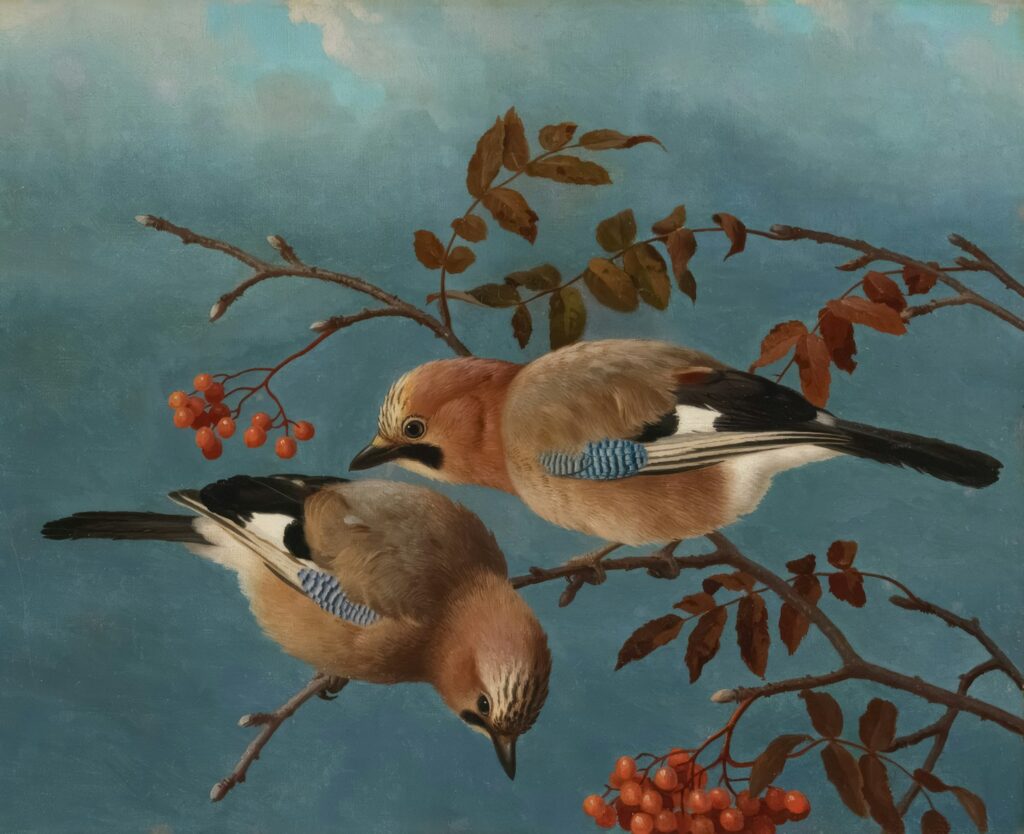
In Ancient Egypt, birds transcended mere artistic subjects to become powerful religious icons and divine representations. The falcon-headed god Horus, one of Egypt’s most significant deities, embodied royal power and divine protection. The ibis-headed Thoth represented wisdom and writing, while the vulture goddess Nekhbet served as a protective symbol of Upper Egypt. These avian deities appeared in temple reliefs, tomb paintings, and hieroglyphics, rendered with remarkable attention to species-specific characteristics despite their anthropomorphic bodies. Beyond divine representations, birds featured prominently in Egyptian art as symbols of the soul, with the human-headed ba-bird representing aspects of the deceased’s spirit. The artistic conventions established for depicting birds in profile with distinctive silhouettes and characteristic poses influenced artistic traditions throughout the Mediterranean world and beyond.
Birds in Classical Greek and Roman Art
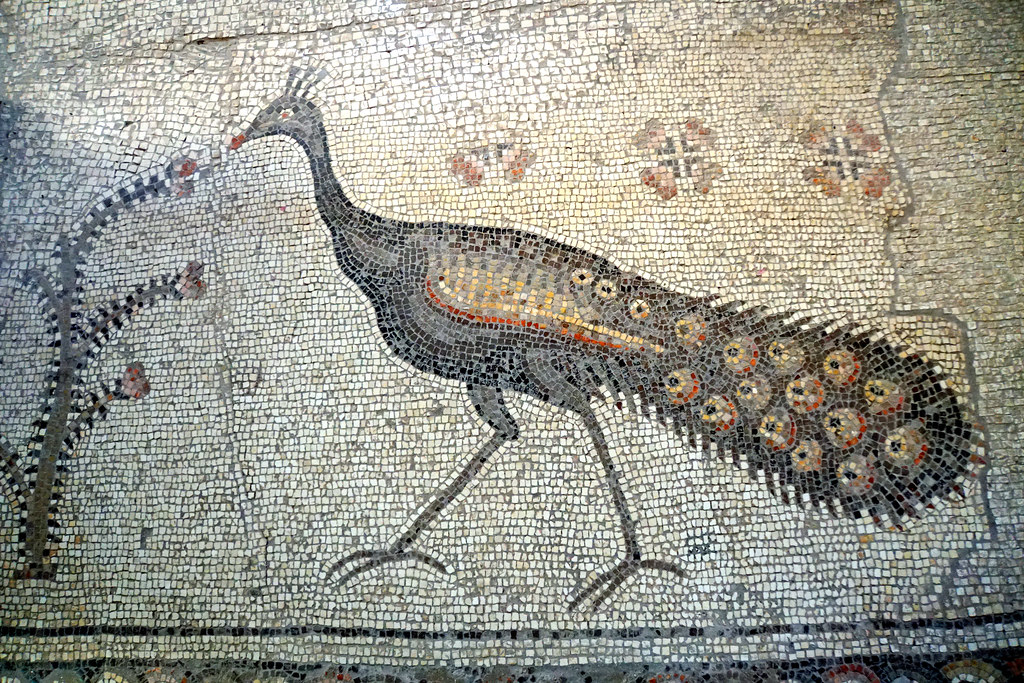
Classical Greek and Roman artists continued the tradition of incorporating birds into their artistic repertoire, though with a shift toward naturalistic representation and mythological narratives. Eagles frequently appeared as attributes of Zeus/Jupiter, emphasizing the bird’s association with power, authority, and divine kingship. In mosaics, wall paintings, and decorated pottery, birds often served decorative purposes while also carrying symbolic weight—doves represented love and fertility as companions to Aphrodite/Venus, while owls symbolized wisdom alongside Athena/Minerva. Roman floor mosaics featuring detailed depictions of various bird species showcased remarkable observational skills and technical achievement, as seen in the famous “Unswept Floor” mosaic, which shows scattered food remains including bird bones. The Romans also developed a tradition of trompe l’oeil bird paintings in domestic settings, creating illusionistic caged birds and aviary scenes that demonstrated their appreciation for both naturalism and the decorative potential of avian subjects.
Medieval Illuminations and Christian Symbolism
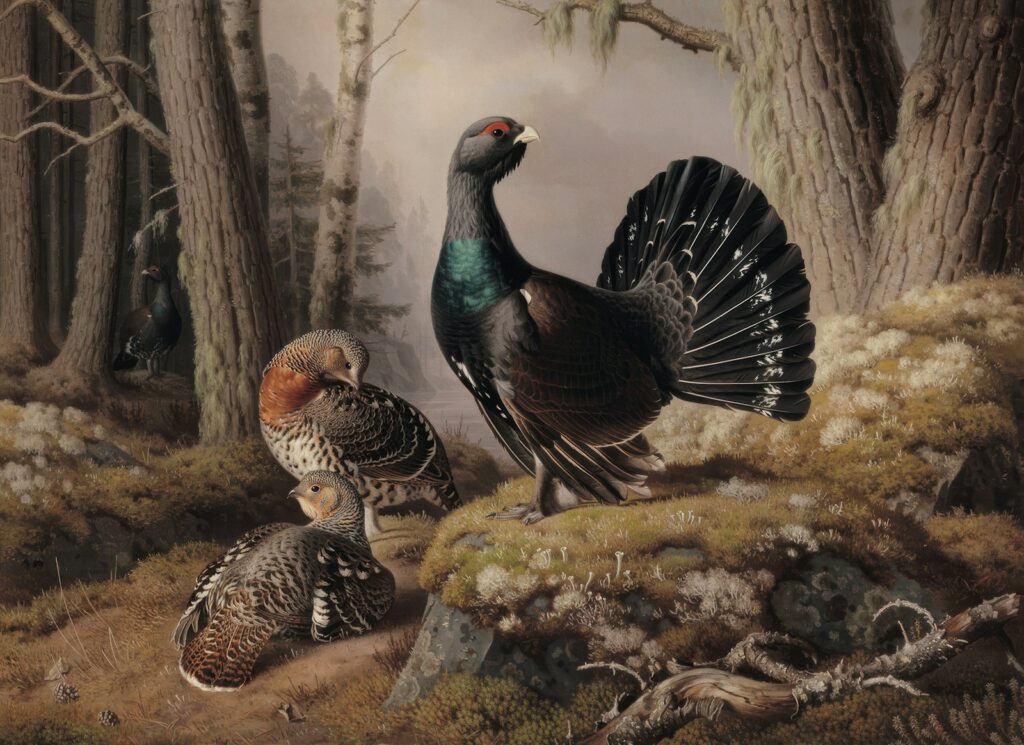
The medieval period saw birds take on profound Christian symbolic meanings while continuing to adorn the margins of illuminated manuscripts. The dove became perhaps the most significant avian symbol, representing the Holy Spirit, peace, and purity in countless religious artworks. Eagles symbolized spiritual ascension and the Evangelist John, while the pelican, believed to feed its young with its own blood, represented Christ’s sacrifice. Birds populated the marginalia of medieval manuscripts in both religious and secular contexts, where they might appear as realistic studies, fantastical hybrids, or participants in humorous or moralistic scenes. The Aberdeen Bestiary, created around 1200, exemplifies the medieval approach to bird illustration, combining careful observation with symbolic and moral interpretation. Through these illuminations, medieval artists established a visual language of bird symbolism that would influence Western art for centuries to follow.
Islamic Art and Decorative Bird Motifs
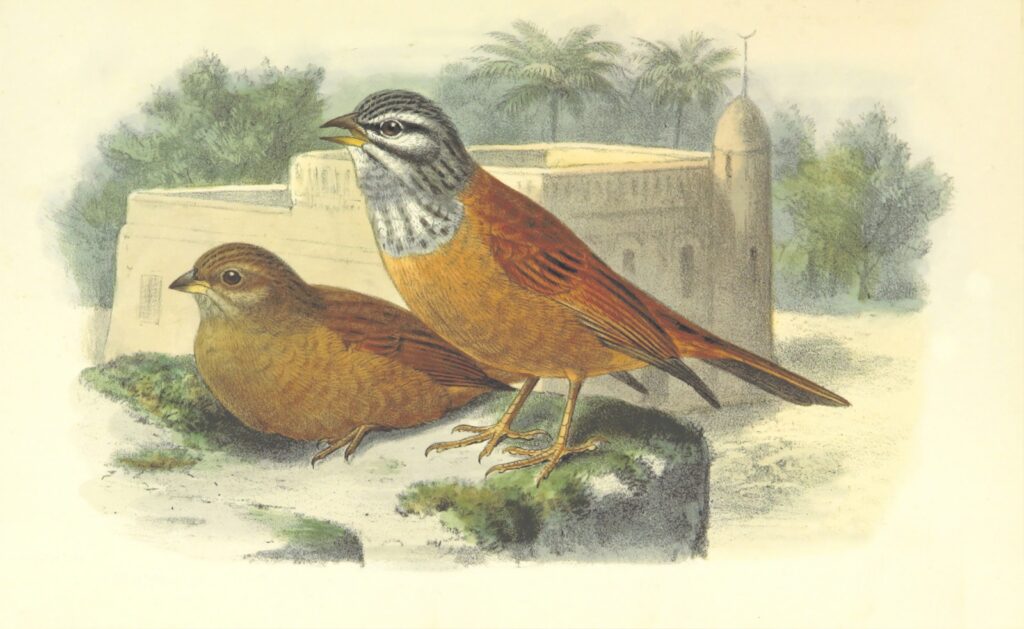
Within Islamic artistic traditions, birds emerged as favorite decorative motifs while navigating religious concerns about figurative representation. Birds adorned ceramic bowls, metal objects, textiles, and architectural elements, often rendered in stylized forms that balanced naturalistic details with decorative patterns. The simurgh, a mythical bird from Persian tradition, frequently appeared in manuscript illustrations and decorative arts, representing divine protection and wisdom. In Mughal painting traditions, artists developed remarkably detailed bird portraits, often depicting specific species with scientific accuracy while incorporating them into courtly scenes or nature studies. These works influenced European ornithological illustration when they made their way to Western collections. The abstracted bird forms found in Islamic arabesque designs demonstrate how artists transformed natural avian shapes into rhythmic patterns that complied with religious preferences for non-representational art while maintaining the grace and movement inherent in birds.
Renaissance Birds: Scientific Observation and Symbolic Function
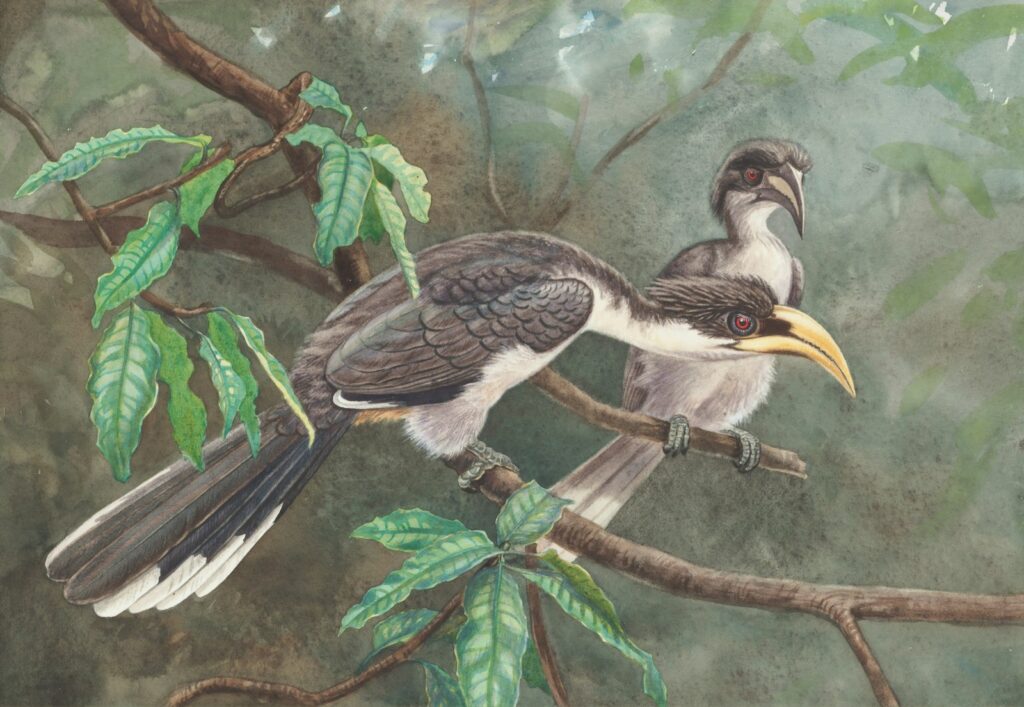
The Renaissance period witnessed a dual approach to avian representation, with birds simultaneously serving as subjects for scientific study and carriers of symbolic meaning. Leonardo da Vinci’s detailed studies of bird anatomy and flight mechanics exemplify the Renaissance interest in understanding nature through direct observation. Albrecht Dürer’s famous watercolor of a dead blue roller bird (1512) demonstrates the period’s growing interest in depicting specific species with accuracy while still imbuing the image with aesthetic and symbolic dimensions. In religious paintings, traditional bird symbolism persisted but was now executed with greater naturalism—doves in Annunciation scenes appeared more anatomically accurate while retaining their spiritual significance. The goldfinch, associated with Christ’s Passion due to its red markings and preference for thistle seeds, became a poignant symbol in Madonna and Child paintings by artists like Raphael and Crivelli, demonstrating how Renaissance artists merged scientific observation with continuing religious symbolism.
Birds in Dutch Golden Age Painting
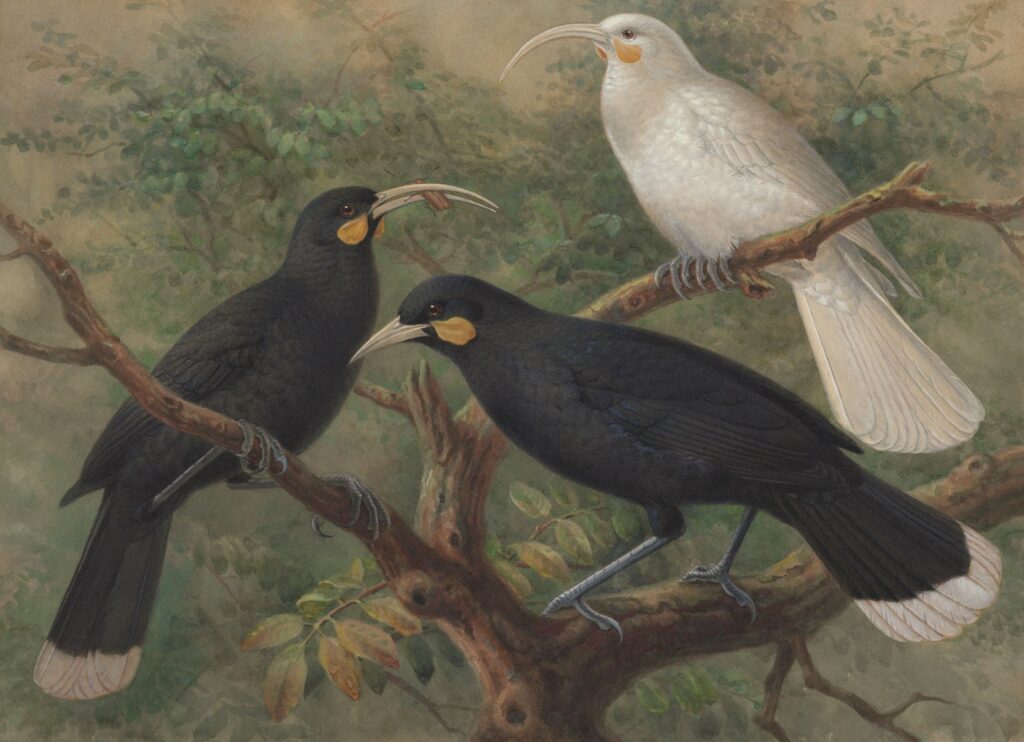
During the Dutch Golden Age of the 17th century, birds gained unprecedented prominence as artistic subjects in their own right, particularly in still life paintings and specialized genres. Artists like Jan Brueghel the Elder created detailed aviary scenes showcasing numerous exotic and native bird species with remarkable anatomical accuracy. The era saw the rise of the gamebird still life, in which painters like Jan Weenix and Frans Snyders depicted hunting trophies with technical virtuosity, capturing the subtle textures of feathers and the limp weight of dead birds. These paintings served multiple functions—demonstrating artistic skill, showcasing the patron’s wealth through exotic specimens, and sometimes incorporating vanitas themes about life’s transience. Melchior d’Hondecoeter, known as the “Raphael of birds,” specialized in paintings of live poultry and exotic birds in park-like settings, elevating barnyard fowl to subjects worthy of monumental treatment. The Dutch fascination with ornithological accuracy established artistic traditions that would influence scientific illustration and bird painting for centuries to come.
Scientific Illustration and Audubon’s Legacy
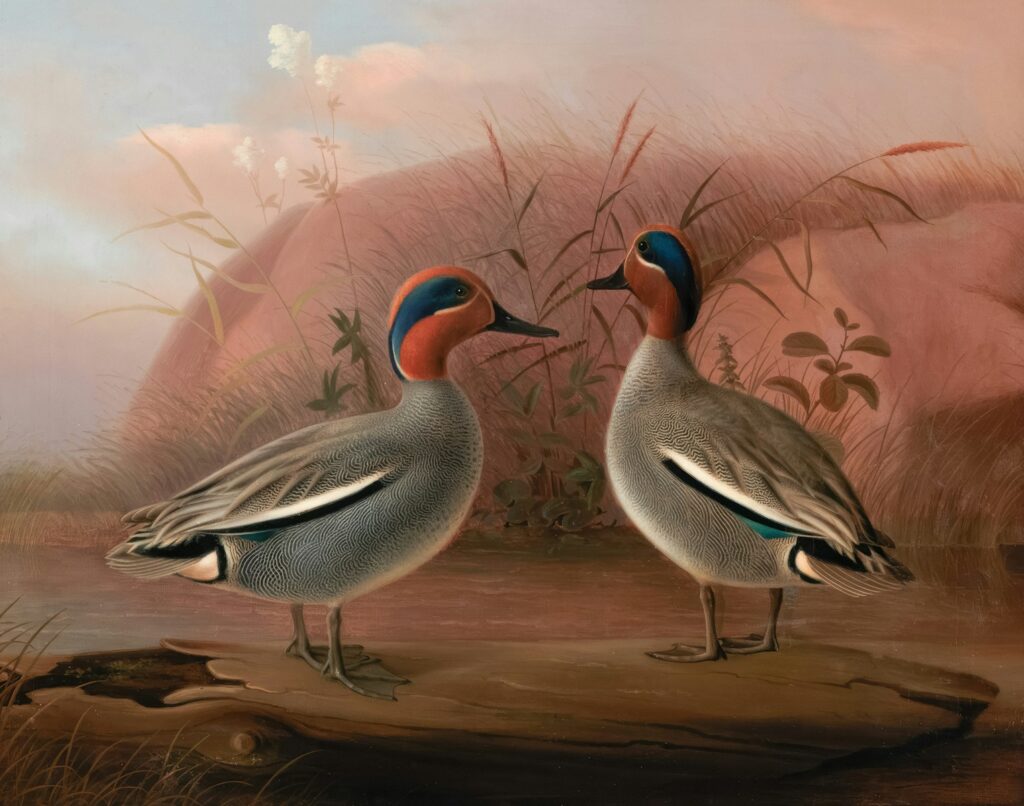
The 18th and 19th centuries witnessed the golden age of ornithological illustration, as scientific inquiry and artistic skill merged to document bird species with unprecedented accuracy. John James Audubon revolutionized bird illustration with his monumental “Birds of America” (1827-1838), depicting birds at life-size in dynamic poses within their natural habitats. Audubon’s innovative approach—working from freshly killed specimens arranged in lifelike positions—produced images that balanced scientific accuracy with dramatic composition and artistic flair. In Britain, illustrators like John Gould produced thousands of detailed bird lithographs that combined scientific precision with aesthetic appeal, documenting species from newly explored regions of the world. These scientific illustrations fundamentally influenced how artists approached bird subjects in fine art contexts, raising expectations for anatomical accuracy while demonstrating that scientific precision and artistic expression could coexist. The tradition established by these illustrators continues to influence contemporary wildlife art and establishes birds as subjects worthy of serious artistic consideration.
Japanese Bird-and-Flower Painting Tradition
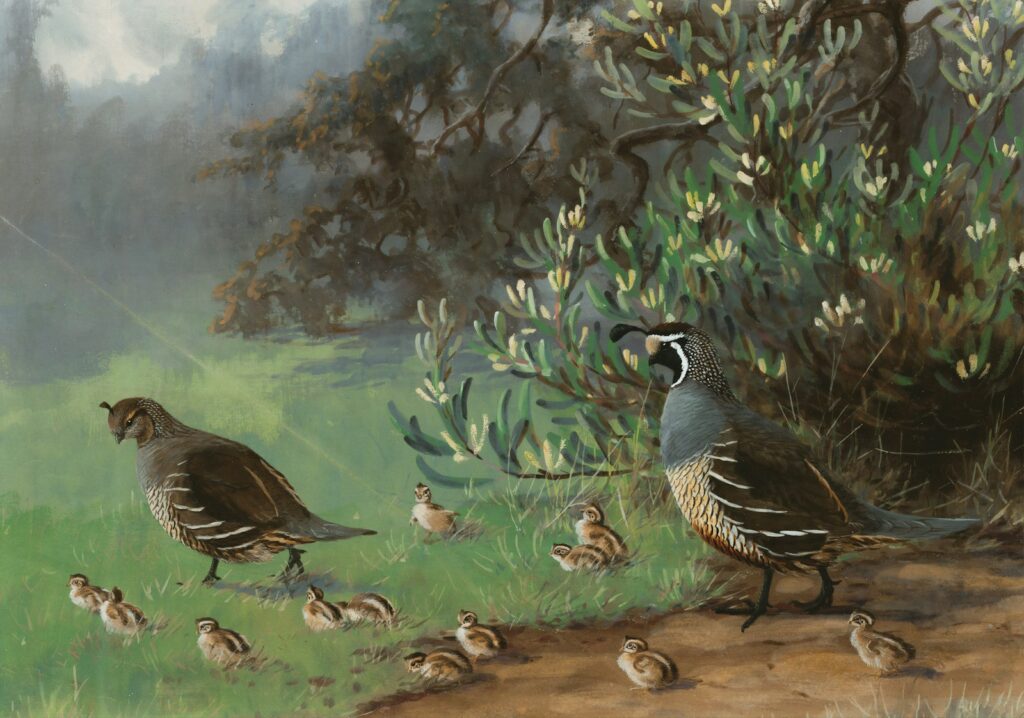
In East Asian art traditions, particularly in Japan, birds-and-flower painting (kachō-ga) developed into a sophisticated genre with distinct aesthetic principles and cultural significance. Artists like Itō Jakuchū created spectacular bird paintings that combined acute observation with stylized composition and decorative patterns, as seen in his masterpiece series “Colorful Realm of Living Beings” (c. 1757-1766). The Japanese tradition emphasized the seasonal associations of different bird species, with specific birds representing particular seasons in the cultural imagination—cranes for winter, bush warblers for spring, and so forth. Ukiyo-e woodblock prints by masters like Hiroshige and Hokusai frequently featured birds in landscape settings or as the central subjects, popularizing avian imagery and influencing European artists when these prints reached Western markets in the 19th century. The combination of decorative stylization and careful observation in Japanese bird art offered Western artists an alternative approach to the European academic tradition, contributing significantly to aesthetic developments in Impressionism and Art Nouveau.
Symbolist and Art Nouveau Birds
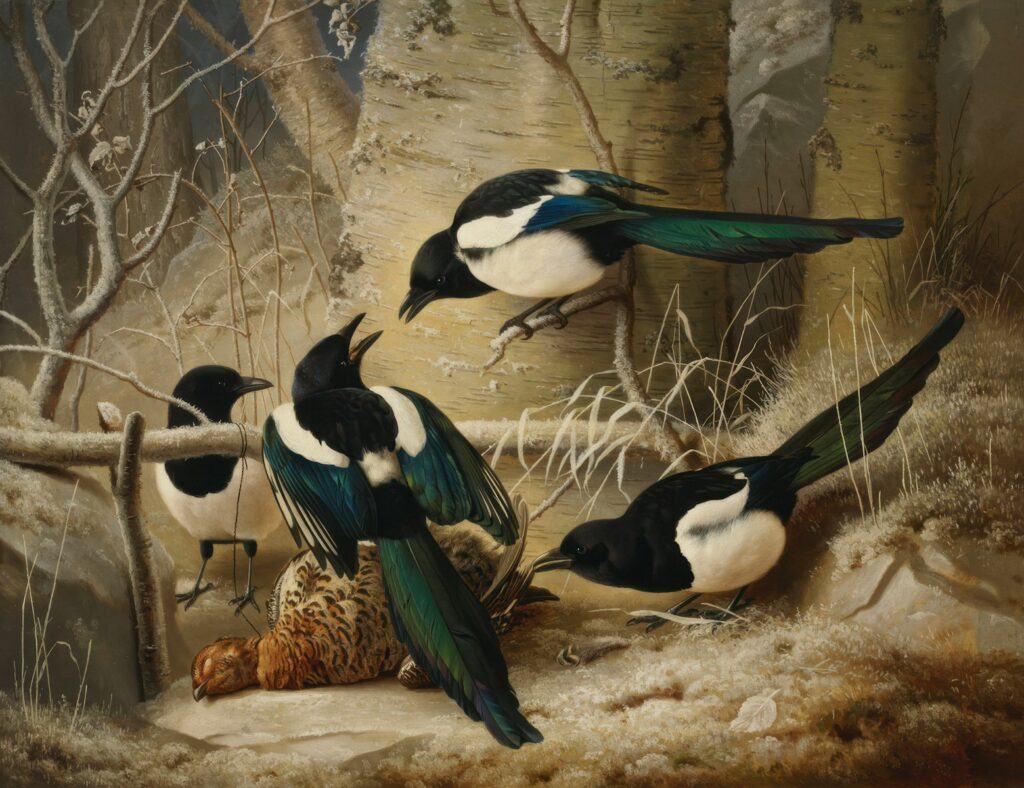
The late 19th-century Symbolist movement embraced birds for their metaphorical and spiritual associations, often depicting them as messengers between realms or embodiments of the soul. Artists like Jean Delville and Gustave Moreau included mystical birds in compositions that explored themes of transcendence and the subconscious mind. The peacock became a particularly important motif in both Symbolist art and Art Nouveau design, its elaborate tail feathers providing perfect material for the sinuous, ornamental aesthetic of the period. In the decorative arts, Louis Comfort Tiffany incorporated stylized birds into stained glass windows and lamps, while René Lalique created jewelry featuring delicate avian forms that captured the ethereal qualities of birds in precious materials. Art Nouveau graphic artists like Alphonse Mucha frequently used swans and other graceful birds as decorative elements in posters and advertisements, merging commercial design with artistic sophistication. These movements reinterpreted birds as carriers of mood and psychological states rather than mere subjects for scientific or realistic representation.
Modernism’s Abstract Birds: Brancusi to Picasso
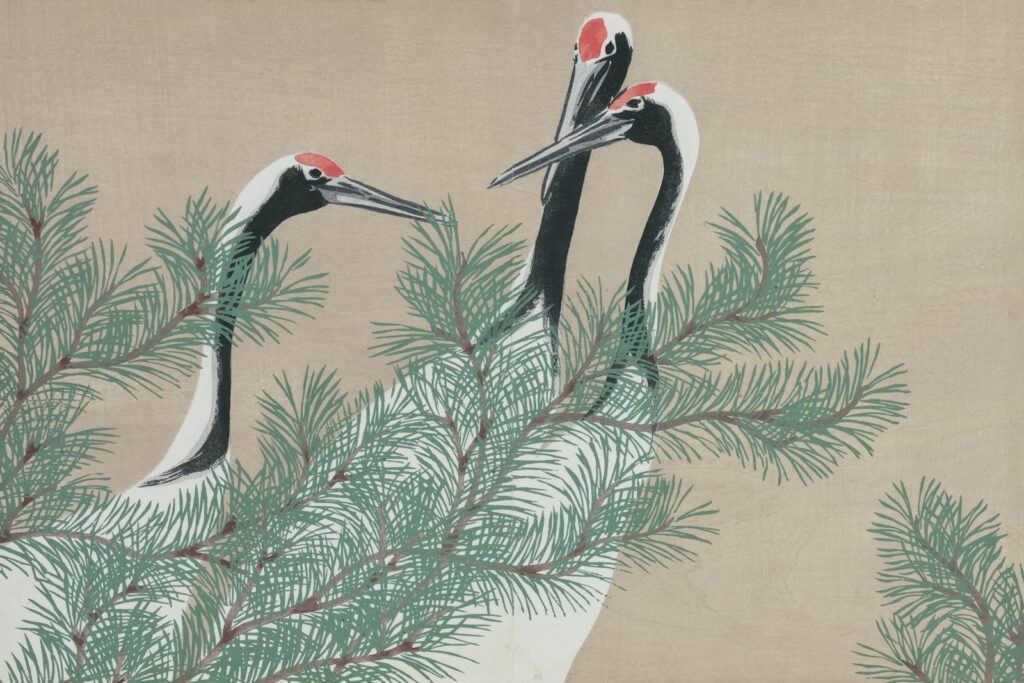
As modern art moved toward abstraction in the early 20th century, birds provided artists with ideal subjects for exploring essential forms and capturing motion in static media. Constantin Brancusi’s streamlined bronze and marble “Bird in Space” series (beginning in 1923) reduced the avian form to its essence—a soaring, streamlined shape that suggested flight itself rather than depicting a specific bird. Pablo Picasso frequently incorporated bird imagery throughout his career, from the realistic pigeons of his early work to the abstracted doves that became his symbol and an international peace icon. Georges Braque, Picasso’s Cubist collaborator, repeatedly featured birds in his work, using their forms to explore problems of representing space and movement on a flat surface. The modernist approach to birds demonstrates how these familiar creatures could serve as vehicles for radical artistic experimentation, with their recognizable yet malleable forms allowing artists to bridge representation and abstraction in ways that viewers could still connect with emotionally.
Surrealist Birds and Psychological Symbolism
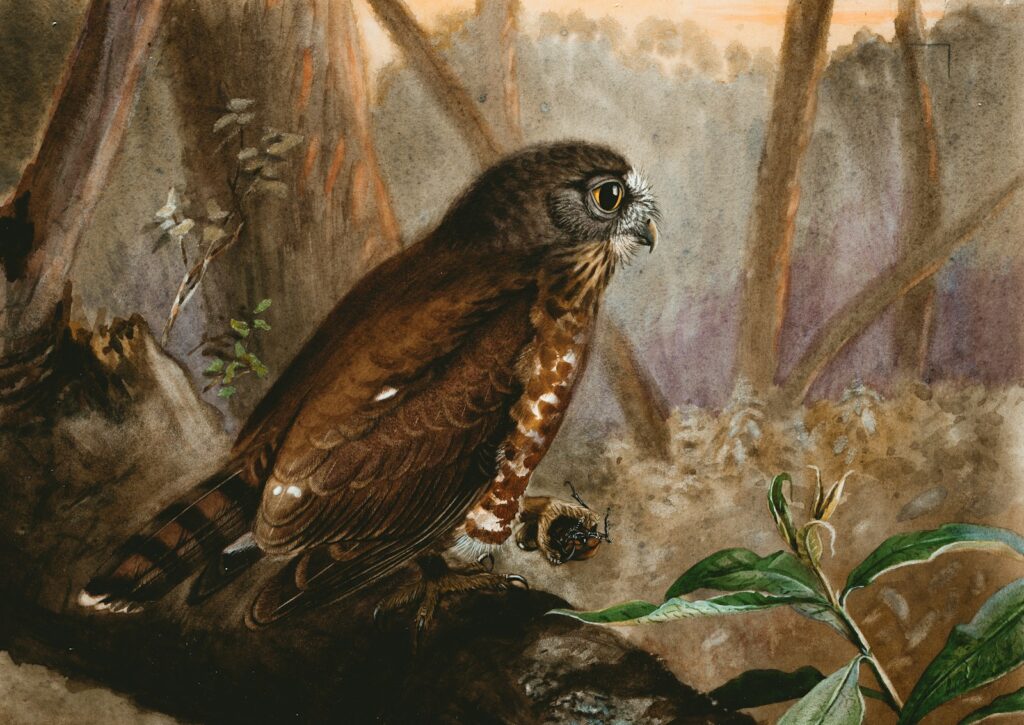
Surrealist artists embraced birds for their dreamlike qualities and rich psychological associations, transforming them into vehicles for exploring the unconscious mind. René Magritte’s paintings frequently featured birds in mysterious contexts, such as “The Return” (1940), where enormous bird-men in bowler hats stand against a twilight cityscape, creating a sense of uncanny displacement. Max Ernst, who adopted the bird as a personal alter-ego he called “Loplop,” created numerous works featuring hybrid bird-human figures and collages incorporating avian imagery drawn from Victorian scientific illustrations. Frida Kahlo included birds in her symbolic self-portraits, often using specific species native to Mexico to represent aspects of her identity and emotional states. The Surrealists’ approach to bird imagery drew on both personal and collective symbolism, transforming familiar avian forms into dreamlike apparitions that challenged rational understanding. Their psychological approach to birds as symbols of freedom, entrapment, or transcendence continues to influence contemporary artistic uses of avian imagery.
Contemporary Approaches: Environmental Art to Digital Media
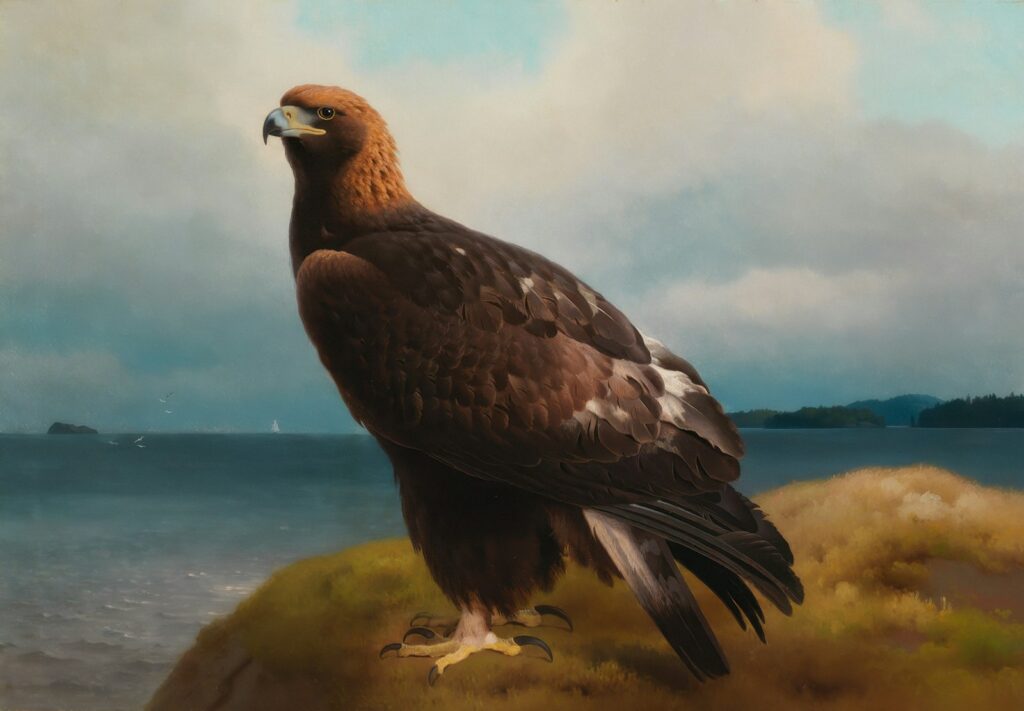
In contemporary art, birds continue to inspire artists working across media, with new approaches reflecting modern environmental concerns and technological possibilities. Artists like Andy Goldsworthy create ephemeral environmental sculptures using feathers and natural materials, documenting these temporary interventions through photography. The growing extinction crisis has inspired works like Brandon Ballengée’s “Framework of Absence” series, which physically cuts extinct bird species out of historic Audubon prints, leaving literal voids that make absence visible. Digital artists create virtual birds with hyperrealistic detail or fantastic, impossible forms, pushing the boundaries of what avian representation can encompass. In street art, artists like ROA paint monumental birds on urban surfaces, bringing wildlife into urban contexts and commenting on habitat loss and human-animal relationships. These contemporary approaches demonstrate how birds continue to serve as powerful subjects and symbols in art, now often carrying environmental messages about conservation and our changing relationship with the natural world.
From prehistoric cave walls to digital canvases, birds have maintained a remarkable presence throughout art history, their forms and meanings evolving alongside human culture and artistic techniques. Their unique combination of beauty, freedom, and diversity has made them ideal subjects for exploring both artistic problems and human concerns across millennia. As we face unprecedented environmental challenges, contemporary artists continue to draw on this rich visual legacy while finding new ways to express our complex relationship with these feathered creatures that have so consistently captured the human imagination. The story of birds in art mirrors our own journey – reflecting our scientific understanding, spiritual beliefs, aesthetic values, and environmental impact through the ever-changing lens of artistic expression.
